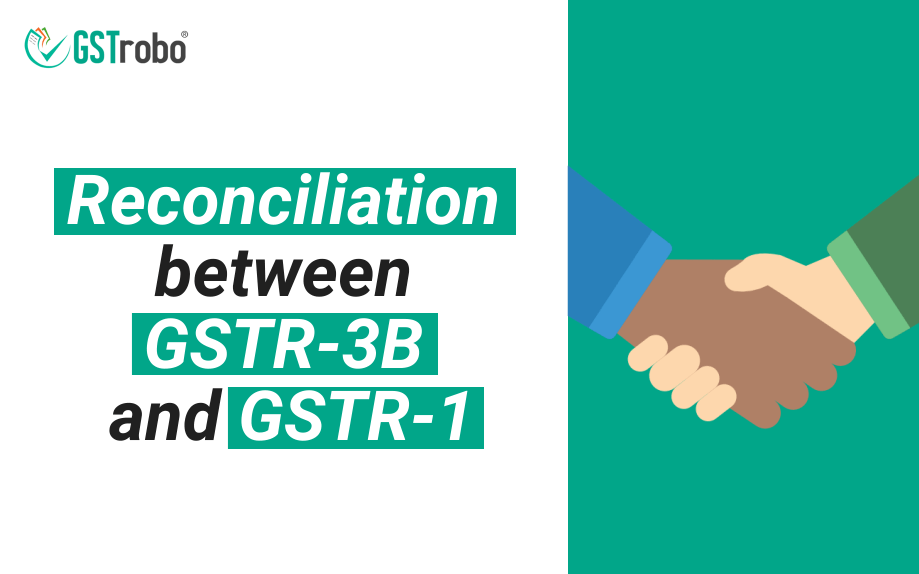Reconciliation between GSTR-3B and GSTR-1
Reconciliation between GSTR-3B with GSTR-1 must be carried out by every taxpayer to ensure that there are no mismatches. As any mismatch between the data can lead to revenue loss and even notices from tax authorities. So, in this blog, we will dive into all the related aspects of reconciliation between GSTR-3B and GSTR-1.

What is GSTR-1?
GSTR-1 is a monthly or quarterly GST return that consists of outward supplies including tax liability. GSTR-1 includes invoice level data that helps the Government to keep track of every transaction. This form helps the recipient to claim an eligible input tax credit (ITC).
What is GSTR-3B?
GSTR-3B is a monthly GST return that consists of a summary of the supplies including input tax credit (ITC) availed, purchases on which RCM is applicable, and so forth for the relevant month.
Importance of Reconciliation between GSTR-3B and GSTR-1
Here is the list of importance of reconciliation between GSTR-3B and GSTR-1:
- Reconciliation between GSTR-3B and GSTR-1 make sure that no invoice is left behind or recorded more than once.
- This reconciliation will also help the taxpayer to determine the correct output tax payable on the sales made. Any late declaration of tax liability can attract interest or penalty.
- As per the recent update, from 1st January 2021, the taxpayer needs to reconcile GSTR-3B and GSTR-1 as any mismatch in the data will lead to suspension or cancellation of GST registration.
- Reconciliation between GSTR-3B and GSTR-1 helps the recipients to avail accurate input tax credit (ITC)
Mismatch between GSTR-3B and GSTR-1 Reasons
Here are some of the common reasons due to which mismatch between GSTR-3B and GSTR-1 occurs:
- Furnishing the data in the wrong table of the GSTR-3B, however accurately detailing the same data at the time of furnishing it in GSTR-1. For instance: Reporting zero-rated sales effectively in Table 6A of GSTR-1, however erroneously furnishing it under Table 3.1(a) in GSTR-3B.
- The mismatch between GSTR-3B and GSTR-1 due to changes in the invoice date issued and the date of credit or debit note issued.
- Inter-state supplies made to an unregistered taxable person not mentioned in GSTR-3B but furnished in GSTR-1.
- Supply value correctly mentioned in GST returns but tax paid in the wrong head. For instance, CGST and SGST rather than IGST or another way around.
- Supplies that may have been corrected in the GSTR-1 due to which there is a difference in tax liability at the time of filing GSTR-3B.
- The mismatch between GSTR-3B and GSTR-1 due to a difference in the time of filing them.
Reconciliation between GSTR-3B and GSTR-1 – Actions
In the wake of considering the circumstances referenced above, if any mismatches are found in Form GSTR-3B and GSTR-1 across months. The taxpayer must pay the outstanding tax liability along with interest or penalty.
Hence, it is important to carry out reconciliation between GSTR-3B and GSTR-1 during every filing period to ensure that the details furnished reconciles. Moreover, this will also help the taxpayer at the time of filing annual GST return as under GST all the return filing system is integrated and any mismatch may lead to fines or penalties or even cancellation of GST registration.
